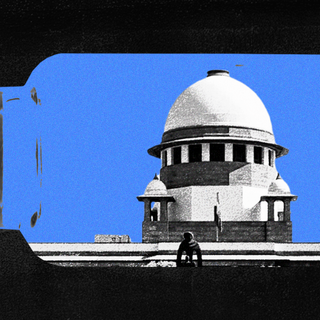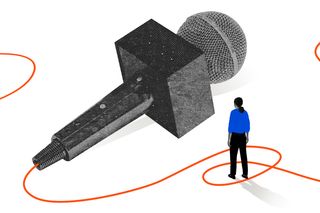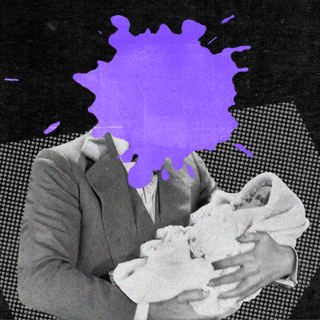
Women in Media Have Come to See Harassment as ‘Part of the Job’: Study
On the other hand, male journalists who face a different kind of harassment often see it as a “badge of honor.”

How safe do journalists feel in their field of work? It depends on who you ask. More specifically, it depends on their gender. There is a grim price women injournalism have accepted as the new normal; that the disproportionate harassment they face — verbal, physical, online — will remain a defining feature of their jobs. On the contrary, male journalists usually face less severe forms of harassment. There is also a sense of pride in being the subject of name-calling and abuse; a marker of their competence and a good day’s work.
Women, thus, face more intense and regular harassment than men, which ends up being normalized for them. On the contrary, for men it’s fewer types of and less regular harassment; this coupled with the historic dominance of men in newsrooms as well as bylines means any threat is considered a badge of honor. These were the findings of a recent study published in Journalism & Mass Communication Quarterly.
The researcher explored the emotional undercurrents that run through media newsrooms. It feels almost intuitive to think that journalists face different forms of harassment depending on their gender. What separates this narrative is how the journalists themselves perceive acts of intimidation; with women seeing it as an inextricable part of their jobs while men wearing it as a “badge of honor.” This inevitably also influences how women see their identity as journalists in the field.
“We have not seen a lot of exploration of emotions in journalism, because for years there was the stigma that journalists are objective, third-party flies on the wall,” Kaitlin Miller, assistant professor of journalism and media at the University of Alabama and the author of the study, told Nieman Labs. “We’re finally seeing research showing that emotion does play a large part in the journalistic process. Here, we’re seeing that it even comes down to how journalists are assessing the experiences that they personally have.”
Miller conducted interviews with 37 print and broadcast journalists in the U.S. The first layer focused on the gendered difference in the kind of harassment journalists face; women were more likely to face 16 different types of harassment. Everything from name-calling, being asked out on dates, sexual threats, and commenting on their looks. Male journalists, on the other hand, were threatened with physical harm.
The second layer dealt with how the journalists themselves perceived this violence. For women, it became a part and parcel of the job. One respondent, for instance, said: “Any time a woman has a strong point of view in a public forum like a newspaper, um, she’s gonna pay for it a little bit.” Threats came with the job — that is the extent of violence and hostility that is currently normalized.
Related on The Swaddle:
News Panels Moderated by Men Are Far More Hostile Than Women‑Led Panels, Finds Report
Contrast this with the response of a male reporter. “I just felt like if this is the reaction, then we must be on the right track, because we’re making someone nervous enough to do something that we’ve never experienced here before.” Or another respondent said: “I’ve kind of sort of felt like it came with the territory, and oddly enough, we kind of wore it as a badge of honor.”
Violence against media professionals is a burgeoning concern globally; countries continue to fair poorly in different indices. India dropped eight ranks — from 142 to 150 — this year in the Reporters Without Borders 2022 World Press Freedom Index.
“The violence against journalists, the politically partisan media, and the concentration of media ownership all demonstrate that press freedom is in crisis in ‘the world’s largest democracy,’ ruled since 2014 by Prime Minister Narendra Modi, the leader of the Bharatiya Janata Party (BJP) and the embodiment of the Hindu nationalist right,” the 2022 report said. The report cited the “Bulli Bai” incident; when an app hosted on Github listed several Indian Muslim women, including journalists, for “auction.”
It is important to understand journalists have different experiences of harassment based on their gender. Which then also means they may have unrelated ways of perceiving and processing the violence. It is a worrying picture that women in media normalize harassment and threats as a component of their professional life that refuses to budge. The ripple effect is one of silence and subjugation; journalists would just accept what comes their way or lest they may be termed incompetent.
“This is particularly bad for women of color, who feel they’re already labeled as speaking out too much. And so we need to see a shift in newsroom culture to more diversity in newsroom leadership,” Miller added. Every disparity hurts minoritized communities the most. Take Khabar Lahariya, a publication covering stories from rural areas. These are women from different communities; Dalits, Muslims, and indigenous Adivasis. When a culture of violence is normalized and forever interlinked with journalism, women face a double burden.
Representation across the spectrum — in terms of gender, race, ethnicity, caste, class, and more — is a step forward. That’s the important but slow piece of affirmative action that can make a difference. What’s more tangible and immediate is to have sturdy laws and practices in newsrooms that will simplify reporting harassment.
It all starts with recognizing that something so ruthless as violence impacts everyone differently.
Saumya Kalia is an Associate Editor at The Swaddle. Her journalism and writing explore issues of social justice, digital sub-cultures, media ecosystem, literature, and memory as they cut across socio-cultural periods. You can reach her at @Saumya_Kalia.
Related


Father’s Last Name Should Not Automatically Pass Down to Children, Rules Italian Court
